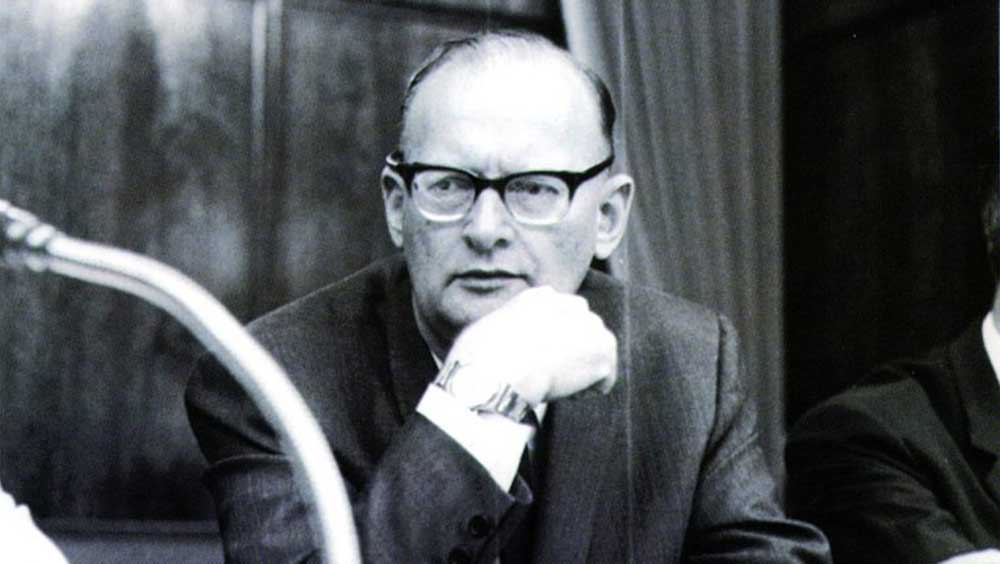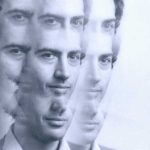Per due volte le strade del Festival della Fantascienza si sono incrociate con quelle di Arthur C. Clarke, lo scrittore inglese profeta dell’era spaziale di cui il prossimo 16 dicembre ricorreranno i cent’anni dalla nascita, nella cittadina di Minehead, nel Somerset.
La prima volta fu nel luglio del 1966, alla quarta edizione della manifestazione triestina, quando Clarke prese parte a una tavola rotonda sulla vita extraterrestre. Di mattino, in piena estate balneare, la sala della Camera di commercio era semivuota. Accanto a lui sedevano un altro scrittore di fantascienza, il suo vecchio sodale Harry Harrison, e Margherita Hack, da un paio d’anni direttore del nostro Osservatorio astronomico. Clarke parlò a braccio, con qualche provocazione scientifica sulla possibilità – un giorno – di viaggiare più veloci della luce. Veniva da Londra, dove aveva da poco cominciato la sua collaborazione con Stanley Kubrick per 2001 Odissea nello spazio. E nel buio di quel Cinema Filodrammatico, dove allora si proiettava la sezione retrospettiva del Festival, mi mostrò le prime foto di scena del film, con i due astronauti a bordo dell’astronave Discovery.
Clarke venne nuovamente invitato a Trieste nel 1971. A tre anni dall’uscita di 2001, i suoi libri spuntavano i contratti più ricchi nella fantascienza del tempo. Questa volta Clarke era presidente della giuria del Festival e fu al centro di un dibattito sui significati del film, che si tenne nella vecchia sede del Circolo della Stampa, in corso Italia. Un dibattito con i soliti intimi. Niente televisione, nessuna intervista, nessuna foto. Allora si usava così. A ripensarci oggi, è incredibile quanto poco risalto mediatico avessero allora questi eventi. Nonostante fossimo negli anni delle spedizioni Apollo sulla Luna.
Se il romanzo più noto di Clarke resta quel 2001 da lui scritto in contemporanea con la sceneggiatura del film, sono un centinaio i libri che Sir Arthur (fu nominato baronetto nel 1998) ci ha lasciato, tra narrativa e saggistica, tradotti in 40 lingue. Romanzi legati al sogno dello spazio (Le sabbie di Marte, Preludio allo spazio); all’evoluzione dell’uomo (Le guide del tramonto, La città e le stelle); al contatto con gli extraterrestri (il ciclo di Rama, Incontro con Medusa); alla tecnologia prossima ventura (Le fontane del Paradiso, con l’avveniristico ascensore spaziale).
Ma i meriti di Clarke vanno ben al di là della fantascienza. Fu presidente della British Interplanetary Society e nel 1945 pubblicò sulla rivista Wireless World un articolo tecnico in cui suggeriva di piazzare tre stazioni spaziali in orbita geostazionaria per le telecomunicazioni globali. Oggi, quell’orbita a 36 mila chilometri dalla Terra è detta anche Clarke orbit. E un suo libro del 1951, L’esplorazione dello spazio, venne usato da Wernher von Braun per convincere il presidente Kennedy che il viaggio sulla Luna era possibile.
Tre mesi prima della morte – avvenuta il 18 marzo 2008 in un ospedale di Colombo, Sri Lanka, dove viveva dal 1956 – aveva affidato a YouTube un video alla vigilia dei 90 anni (anzi: delle novanta orbite attorno al Sole, come preferiva dire). Seduto sulla sua sedia a rotelle, aveva espresso tre desideri: “Vorrei vedere qualche prova di vita extraterrestre. Vorrei vedere l’uomo rinunciare al petrolio e utilizzare fonti d’energia pulita. Vorrei vedere una pace duratura nel mio paese d’adozione, lo Sri Lanka”. Tre desideri che sono altrettante chiavi della sua esistenza: l’incontro con una cultura aliena, la fiducia in un futuro reso migliore dalla tecnoscienza, l’amore per l’isola che gli ha offerto le meraviglie delle immersioni subacquee lungo la barriera corallina e una visione buddhista della vita. A lui, agnostico da sempre, ma aperto al misticismo. Perché, come amava dire, “ogni tecnologia sufficientemente avanzata è indistinguibile dalla magia.”[:en]Twice already the Trieste Science+ Fiction Festival has crossed paths with Arthur C. Clarke, the British writer and prophet of the space age born in Minehead, Somerset, whose hundredth birth anniversary will be celebrated on December 16th this year. The first time was in July 1966, during the fourth edition of the Trieste event, when Clarke himself participated to a panel on extraterrestrial life. That morning, in the middle of the summer season, the hall of the Chamber of Commerce was half empty. Sitting beside him, another science-fiction writer, his old pal Harry Harrison, and Margherita Hack, a few years into her assignment as director
of our astronomical observatory. Clarke improvised his speech, daring science and the audience with suggestions of a possible future of faster-than-light travels. He arrived from London, where he had just started his collaboration with Stanley Kubrick for 2001: A Space Odissey. And, in the dark of that stage theatre where at the time the retrospective section of the Festival was screened, he showed me the first stills from the set, with the two astronauts on board of the Discovery spaceship. Clarke was invited again in Trieste in 1971. Three years after 2001 hit the screens, his books earned him the richest contracts in science-fiction writing at the time. This time Clarke was president of the Festival Jury and found himself at the centre of a debate on the meaning of the film, which took place in the old headquarters of the Press Association, in Corso Italia. A debate amongst the usual few genre enthusiasts. No TV crews, no interviews, no photo shoots. Things were done that way, then. Today it seems impossible to think how little a media impact this kind of events attracted. Despite us living in the years of the Apollo missions to the Moon. Although Clarke’s most famous book still is 2001, which was written at the same time as the film screenplay, Sir Arthur (he was knighted in 1998) left us hundreds of other books, both novels and essays, translated in 40 languages. Novels inspired by the dream of space travel (The Sands of Mars, Prelude to Space); by the evolution of man (Childhood’s End, The City and the Stars); by the contact with aliens (The Rama cycle, A Meeting with Medusa); by near future technologies (The Fountains of Paradise, with the futuristic space lift).
But Clarke’s merits go well beyond science-fiction. He was President of the British Interplanetary Society and he published in 1945 a technical article on the Wireless World journal in which he suggested three space stations for global telecommunication could be placed in synchronous orbit. Today, that orbit 36 thousand kilometers far from Earth is also called Clarke orbit. And his 1951 book The Exploration of Space was used by Wernher von Braun to persuade President Kennedy that the mission to the Moon was possible. Three months before his death – he died on March 18th, 2008 in a hospital in Colombo, Sri Lanka, where he had been living since 1956 – he posted a video on Youtube on the eve of his 90th birthday (or better, as he preferred to say, of his completed 90th orbit around the Sun). Sitting on his wheelchair, he expressed three wishes: “I would like to see some evidence of extraterrestrial life. I would like to see us kick our current addiction to oil and adopt clean energy resources. I dearly wish to see lasting peace establishing in Sri Lanka, my adopted country, as soon as possible”. Three wishes which are key to his very existence: the meeting with an alien culture, the trust in a better future because of technoscience, the love for the island that gave him the wonders of his underwater explorations along the coral reef and a Buddhist vision of life. Him, an agnostic to boot, but open to mysticism. Because, as he loved to say: “Any sufficiently advanced technology is indistinguishable from magic.”
Arthur C. Clarke 100






